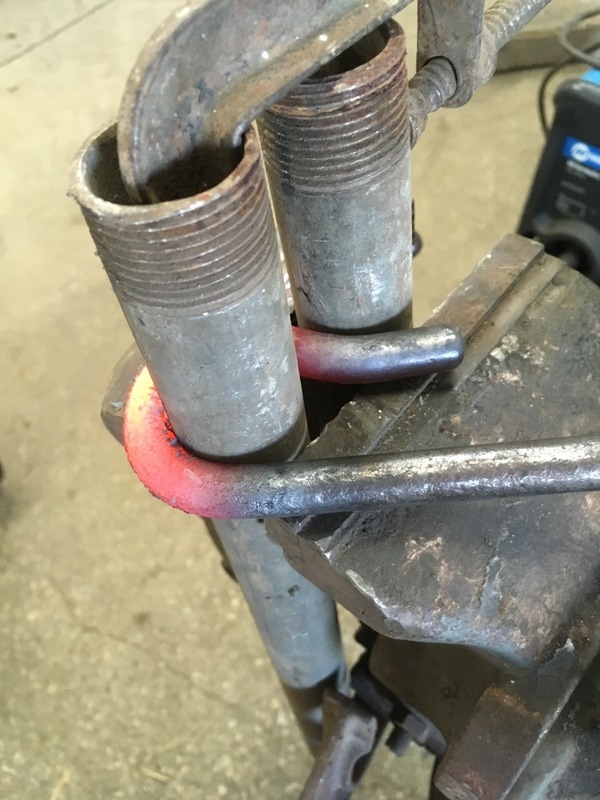|
Time-saving movements pay off immediately, but time-saving devices always seem to be an investment equation—pay up front to save later. Think about every computer program you’ve ever learned. They take a ton of time to learn before you become proficient with them. It’s the same with building labor-saving devices (I know, “labor-saving” is a relative term for a guy whose work style could be described as “horseless-Amish”.) I decided that I’d try to save some time this year by making it easier to drag my shelters, feeder, and watering deck by putting tow hooks on them. All my portable hog infrastructure is on wood skids (oak or cedar). Last year, I made deep-throat clevises that pin onto the skids of the shelters, feeder, or watering deck. When I need to move everything longer distances or uphill (and use the BCS), I have to pin the clevises on, hook up the tow chains from the BCS, move the item, and then unhook and unpin the clevises to go to the next item. The clevises were easy to make and I only needed one set for everything, but I got sick of fighting mud sometimes to pin and unpin them. Working in my dad’s shop earlier this week, I made several sets of tow hooks for my shelters, feeder, and water deck. Having hooks on everything will save me a couple minutes every time I move all the infrastructure with the BCS, not to mention that I won’t have to keep track of my hand-forged clevises and the easily-lost 6-inch bolts I use as hitch pins. The materials for my hooks were free. The rod-stock came from grates over the windows in my barn’s horse stalls. I cut the mounting plates out of larger mounting plates from a scrapped harrow. But free isn’t really free. You need clean metal to make good welds. Using scrap metal means burning time busting rust with a cup-brush on a 4” hand-held grinder—about as gratifying as trimming your toenails while wearing a dust mask and earplugs. Ever after material prep, it's on to more boring stuff—literally. I laid out and drilled holes in all the plates where they would bolt to skids. All that prep for the faster, fun parts. I love shaping hot steel between a hammer and anvil, but I found a much better way to make curves. Two pipes clamped in a vise make quick bending jig that gives you easily repeatable results. I could heat the rod with a torch and make shepherd’s-crook bend in under a minute and a half with most of that time going to heating steel. Then I cut off the hook and repeated the process nine more times before I welded ten hooks to their plates. I felt like I was getting pretty fast at fabricating, but the clock disagreed. All that brushing, cutting, grinding, drilling, bending, and welding took about four hours—more time than the hooks will save this coming season. But it’s a project I won’t have to repeat for several years. The hooks will pay off eventually—in time saved and education.
0 Comments
Your comment will be posted after it is approved.
Leave a Reply. |
Ryan Erisman
Former Marine Infantry Officer. Iraq Vet. Interested in Regenerative Agriculture at any scale. Archives
February 2023
Categories |
Odyssey Farm, LLC.
The Odyssey Farm Journal
Odyssey Farm, LLC
|
Dane County Climate Champion
|
608.616.9786
|
Copyright © 2016

 RSS Feed
RSS Feed